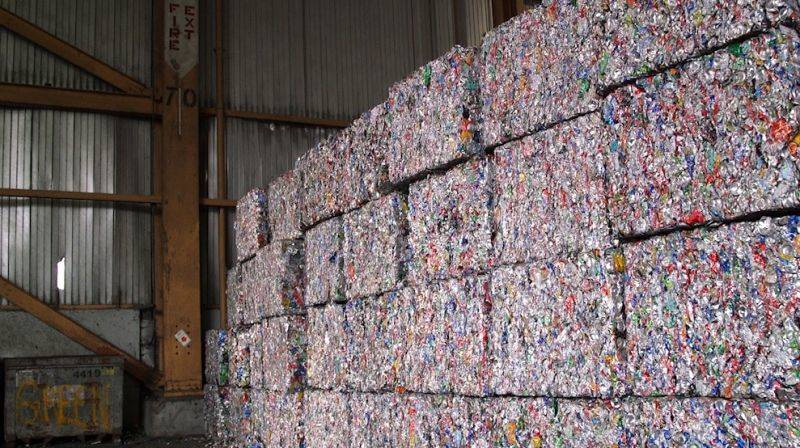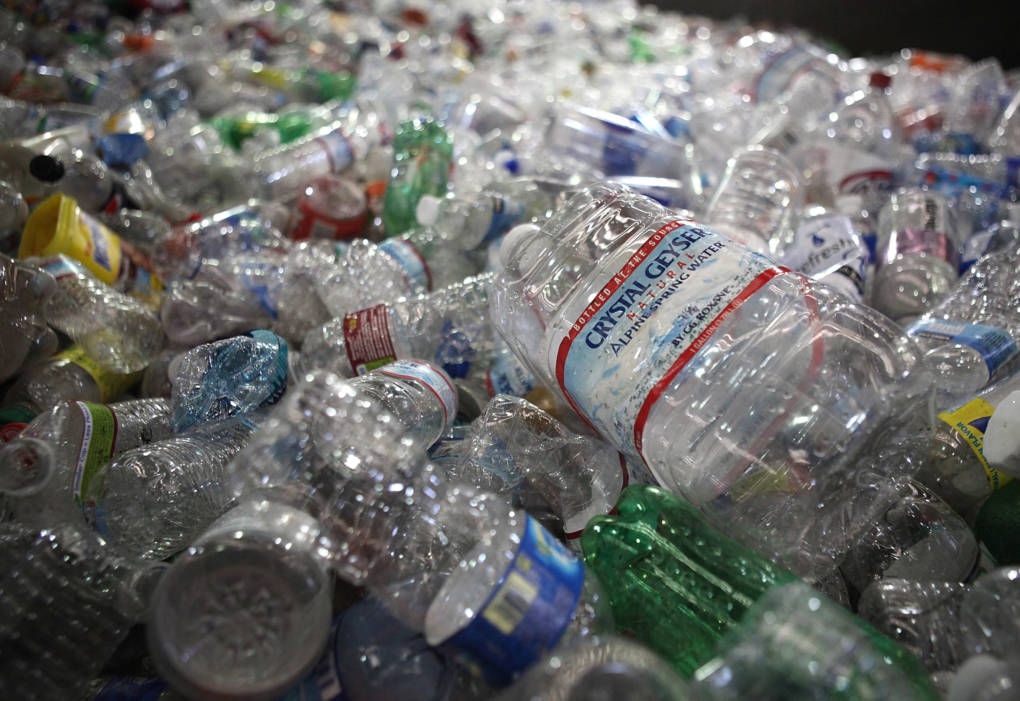For most Californians, it’s a no brainer. Toss all your recyclables into a big blue bin, a truck comes to take it, and it all somehow gets recycled.
A Lot of the Stuff We Throw in Those Recycling Bins Is Really Just Trash

But it turns out this easy-as-1-2-3 scenario is at least part fantasy.
Much of what’s in our blue bins is simply trash — meaning, it doesn’t get recycled, but ends up in landfill. Last week KQED’s Brian Watt spoke about the issue and what can be done about it with Mark Murray, who directs the advocacy group Californians Against Waste.
The following excerpts have been edited for length and clarity.
You have said consumers have been lulled into thinking almost everything is recyclable.
Mark Murray: Well there’s been such a desire to divert material from landfill, and there has been a lack of appreciation of the difficulty consumers have in figuring out the details. So programs have erred on the side of saying, ‘Just throw it all in the bin.’ But we know that not all that material is recyclable.
How much of what I put in my blue bin is not getting recycled?
Well the good news is that most of the material is continuing to get recycled, because most of the material is paper. Paper, as long as it’s not contaminated with plastic or tape, remains 100% recyclable. Glass, 100% recyclable. Metal containers, aluminum cans, 100% recyclable. Same goes with plastic soft drink bottles and water bottles. [PET plastic, coded as No. 1 on containers and packaging.] Same goes with plastic bottles for milk or detergent [HDPE plastic, coded as No. 2].
It is basically the mixed materials, the plastic-coated paper cartons and juice boxes, the 3 through 7 plastics, that are not being recycled.
China has been blamed for not wanting our recyclable materials anymore. How much of a problem is that?
So let’s be clear. It was a good thing that China informed us that a lot of our recycling was fake. Brokers in China were telling curbside programs in the United States, ‘Throw whatever you can into that bin, and we’re going to find ways to recycle it.’
The fact is they were never recycling the 3 through 7 plastics. They were never recycling the juice boxes and the plastic-coated paper and the plastic film that was wrapped up with the paper. They were using cheap labor to sort out the good stuff and throw the rest away, which meant they were illegally dumping or burning that material. That’s why the Chinese government shut down these bad operations and basically provided the U.S. with this really honest information about the fact that a lot of the crap you’ve been sending us has not been recyclable.
What legislation to address recycling problems is currently on the table?
There are two different approaches. One is this notion of setting a comprehensive producer-responsibility requirement for all packaging. [The bill] basically says all packaging generated in California, and other single-use products, need to meet the same 75% source reduction, recycling and composting requirements that we’ve already adopted for the entire state. This would mean producers have to finance and develop the recycling mechanisms or reduce the volume of original material entering the marketplace by 75%.

Is that 75% goal realistic?
It is absolutely realistic, because we’re already doing it with beverage containers and corrugated cardboard boxes. We know how to make recycling work, and recycling works when there is a buyer for the recycled material, and ideally that buyer is right here in California. In every place where there’s a California buyer, we have successful recycling.
There’s a second bill. What would that do?
Assembly member Phil Ting from San Francisco is carrying legislation that would literally compel the beverage industry to buy back the plastic they use in beverage containers. So that’s another way of driving the markets for recycling.
What can people do differently to help with the recycling issue?
The most important thing you can do is not when you’re standing over your recycling bin once a week, but when you’re at the grocery store, when you’re at Target or Walmart or wherever you do your shopping. We need to buy smarter and look at labels and focus on packaging that is recyclable or compostable. Ideally [what you buy has] the least amount of packaging or is reusable packaging. Being a good recycler actually starts at the store.
